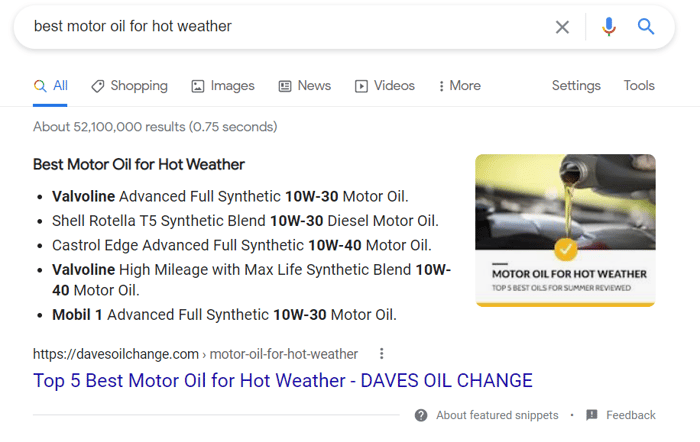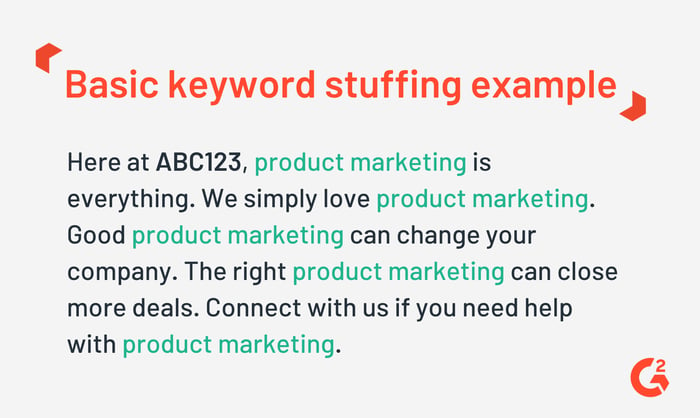
Are you writing blog posts that aren’t getting anywhere on search engines? An effective blog can pull tons of traffic – if done correctly. However, you can’t simply write an essay on any topic and expect traffic to pour in. Writing the perfect blog post for SEO requires strategy, planning, and skill.
Search engines and readers look for certain things when browsing the internet for content. It’s up to you to hit all those marks with your blogs.
In this article, we’ll be showing you how to write the perfect SEO-friendly blog. Let’s get started.
How can blog posts improve your site’s SEO?
Blog posts are heavy hitters in the marketing space. They can accomplish a lot for your website, helping your inbound marketing and content marketing efforts. By writing a blog that’s optimized for search engines, you’re elevating your chances to rank high on your target SERPs (search engine result pages).
Here are just a few ways that blogs can culminate in SEO improvements:
- Blogs increase the average time spent on your site. The longer you’re able to keep readers on your site, the better. Providing them with valuable resources like blog posts gives them a reason to stay and browse.
- They can open up opportunities for link building. With long-form content on your website, you have the ability to link to third-party sites that may boost your own site’s ranking.
- Writing blogs helps establish your business as an authority. Through blog writing, you can turn your brand into a thought-leader within your industry. This is done by providing valuable, relevant, up-to-date content that your audience is looking for.
- SEO-friendly blogs enable you to target long-tail keywords. Because blogs are long-form, there are lots of opportunities to target more specific long-tail keywords. These types of keywords are much easier to rank for as well.
Best Blog Post Types for Boosting SEO Rankings
Certain blog posts reliably perform well when working towards a high search engine ranking. Let’s dive into what those SEO-friendly blog posts may look like.
Listicles & Ranked Articles
List-based articles, usually referred to as “listicles,” are blogs that list items on a specific topic. These list items could be solutions, tips, ideas, products, or anything else that can be listed. Typically, these articles will either rank the list items or simply showcase a selection of the “best” in the given category.
Listicles are one of the easiest types of blogs to write, making them one of the most popular. However, don’t be mistaken – they still provide value in many ways.
For each list item, you may be linking to a third-party solution. This can end up establishing a relationship between you and that third-party website. In return, that initial link may result in an earned link on their own site.
Ranked articles and listicles are also perfect opportunities for targeting high-intent keywords. When users are looking to commit to a solution, one of the final steps before conversion is usually searching for the “best” fit for them.
Here’s an example. When you search for the term “best motor oil for hot weather” on Google, the top result is a rich snippet to a blog with several solutions. Through a listicle, this website has earned the top spot on a high-intent SERP.

Instructional “How To” Articles
Whether it’s instructions on how to use a product, or a blog about how to perform an action, “how-to” articles are highly sought after – and beneficial for SEO. A “how-to” blog can directly instruct readers on how to use your product or be on a topic that’s relevant to your industry and audience’s needs as a whole.
In fact, this blog is a “how-to” style blog! While Shift4Shop is an eCommerce platform, our readers find value in topics related to websites – especially SEO tips.
Your instructional article should target a long-tail keyword that asks a question, such as “how to change your car’s oil.” Your blog should answer that question in detail.
By targeting that keyword, your website will appear when users search for that question. If you can provide users with the solution to their problem, your website (and brand) may stick in their minds as a valuable resource.
If you’re an eCommerce website and you sell products requiring instructions, this type of article can be extremely useful as well. Rather than intimidate customers with a complicated new product, you can guide them through what it is and how to use it. This approach should dissuade any worries along the way for your customers.
Industry News & Current Events
When you report on news or current events happening within your industry, you’re working to establish authority. This type of blog frames your business as one that keeps up to date with what’s going on in your industry. It also turns your website into a reliable resource for your target audience.
News articles can also help your content marketing strategy. By reporting on new happenings in your industry, you can set a foundation for a new product you may be introducing that relates to that news. This helps prove that your business is constantly staying on top of evolutions within your field.
Research-Based Articles & Case Studies
A blog article can be extremely valuable if the content and data within it are entirely unique. Doing extensive research on a topic that may not be covered widely can insert your website into SERPs with low competition.
Also, as a primary source for your research or case study, you can earn links on other sites that may want to reference the results of your findings. This can be a huge help with link building, boosting your site’s authority (and SERP ranks) as a result.
Visual Blogs & Infographics
An infographic is a type of graphic that uses visuals to interpret data. With the increasing preference for visuals on the internet, infographics and dynamic visuals are a must. Readers gravitate to content with visuals – walls of text aren’t the best at keeping a reader’s attention for long.
Visuals like infographics can be useful for instructional style posts, illustrating a process and helping readers better understand and absorb content. They’re also highly sharable, which makes them versatile and usable on platforms like social media.
Like research-based articles or case studies, blogs with visuals like infographics can also be great opportunities to earn high-quality links. Other sites are also looking for visuals to supplement their blogs, so creating your own infographics can be a quick route to link placement.
8 Tips for Writing SEO-Friendly Blog Posts
With a foundation in place, you can now begin writing your SEO-friendly blog article. Let’s go through some tips you should keep in mind as you write.
1. Establish target keywords first.
Before you start writing, create a goal for your blog. When it comes to SEO-focused blogs, it’s key that you establish what keywords you want to target with your content.
Focus your main efforts on relevant, long-tail keywords that you have a chance to rank for. These keywords should, ideally, have low competition and high search volume. Research related keywords and target those as well, as these can be helpful as you write.
Keyword research tools like Ahrefs and Moz can help you find the best keywords to target.
2. Outline with the right heading structure.
With your keywords in mind, you’ll next want to create the basic skeleton of your blog. In addition to the primary question you’re answering, answer all of the secondary questions that relate – this is where relevant keywords come in.
Your blog should follow this basic structure:
- Introduction: Start by introducing the reader’s pain point: why did they click on your blog? Tell them that they will find what they’re looking for and introduce your topic.
- Body: This can take many shapes and sizes and will depend on the type of blog that you’re writing. You can include subheadings within your content to add more structure.
- Conclusion: Quickly summarize what you covered. Many skim readers will skip to the end of a blog to get an idea of what is discussed, so be sure to include a conclusion in every blog.
As you outline and write your blog, you also want to correctly utilize heading tags. This doesn’t mean using a larger font and bold type for each heading. It means using H1, H2, H3, etc. tags when formatting your blog.
Your H1 should be the title of your blog. This can differ from the page’s title tag, but it shouldn’t be completely different. The blog’s H2 tags should be used for subheadings within the blog’s content. Nested subheadings within those sections should use H3 tags. If necessary, follow that pattern with descending heading tags.
Proper use of heading tags helps search engines better understand what your blog is about. This is crucial in determining your website’s rank on SERPs. Headings also help readers to find the information they’re looking for – especially for users using screen readers. Accessibility is necessary for better ease of use, which search engines take into consideration as well.
3. Write in an easy-to-read style.
Even if your blog contains really valuable content, it won’t perform well if it’s hard to read. Users faced with walls of text will quickly lose interest and bounce to another site. To avoid this, there are a few tactics you can use when writing your blog:
- Write short paragraphs and sentences. Readers don’t want to spend much time looking for information. This ends up in larger paragraphs getting skipped. Long sentences can be hard to read as well, so keep things short and to the point.
- Break up text with images. Visuals can keep a reader’s interest for much longer than “boring” text. Images that are relevant to the blog content can even elevate its value.
- Use bullet points and numbered lists. This format makes information easier to follow and absorb – especially for skim readers.
Before you publish your blog, check how it looks on both desktop and mobile. A blog that may seem easy to read on a laptop may be a huge wall of text on a smartphone, so format your blog to avoid that. Remember: mobile users come first for search engines, so optimize with them in mind.
You can also use a tool like Hemingway Editor to see how easy it is to read your blog. Cut down on sentences that are hard to read and simplify complicated terms and phrases.
4. Utilize keywords without stuffing.
While you do want to effectively target your keywords, you want to avoid keyword stuffing.
What is keyword stuffing? It’s an outdated SEO tactic that involves inserting the same keyword repeatedly into a page – usually without consideration for relevance or readability. Here’s an example of keyword stuffing:

Source: G2
When you write a blog, you want to avoid this at all costs. Search engines like Google actually penalize sites that use keyword stuffing. In Google’s own words, “Filling pages with keywords or number results in negative user experience, and can harm your site’s ranking.”
Instead of keyword stuffing, stay mindful of when and how you use your target keyword. Space out mentions and use it when it makes sense. Rather than repeat the same keyword phrase over and over, use variations or related keywords. This will help your blog to sound much less like spam and more like it was written for a human reader.
5. Make sure that your blog is the right length.
According to HubSpot’s research, the ideal length of a blog article is between 2,100 and 2,400 words. However, even HubSpot states that not every blog should be this long. Some may benefit from short word counts, while others could benefit from higher ones.
As a general rule, longer blogs perform better. One major benefit of a longer word count is the opportunity for more optimization. To find your website’s ideal blog post length, do some research into competing articles for your target keywords. How long are the top-performing blogs in your industry? Would they do better if they were longer or shorter?
6. Add relevant internal and external links.
Blogs are the perfect opportunity for link building. This goes for both links within your own website and outside of it.
By linking to other blogs that your site has published, you can help guide readers to other relevant content on your site – keeping them with you for longer. Internal linking can also help you spread the success of one blog to others on your site, improving their rankings in the process. Search engines, in general, appreciate internal linking as well, due to it helping their bots crawl and index your site quicker and easier.
You’ll also want to build links with other sites relevant to your industry. Link to resources that you used to write your blog, cite statistics when you include them, and add links to resources that can supplement your own offering. When you add trustworthy, high-quality site links to your blog, you can effectively improve your site’s credibility.
Be aware, however, that low-quality sites can actually be detrimental to your rank. Look into the websites that you’re linking to before you hit publish. If you’re unsure of a website’s reputation, you can add a “no-follow” tag to the link.
7. Optimize the blog’s metadata.
Underneath the face-value content of your blog is its skeleton – the metadata. This data can be just as valuable to search engines as the content on the page itself.
When finalizing your blog, you want to optimize any metadata involved with its page. Be sure to take care of the following:
- Write a targeted meta description that’s less than 120 characters.
- Use a custom, optimized URL that includes your target keyword.
- Add alt text to any images on the blog to describe the image.
Optimized metadata can help search engines properly rank your site and improve the look of your search result. If your meta description is too long, for example, your result on a SERP may look like this:

8. Update your posts when necessary.
Even though your blog post is relevant and accurate when you post it, there’s no guarantee that it’ll stay that way. To keep your website’s content up to date, regularly go back to old content and update it. This could be simply correcting outdated information or giving sections a facelift.
Updating your posts is necessary if you plan on using your blog post as evergreen content, which is content that is meant to stay fresh and relevant for a long period of time.
Some readers may even skip over blogs that have a date too old for their preference. If they’re looking for the best new smartphones on the market, they won’t want to read a blog from three years past. Keeping content updated and refreshing that publish date helps readers trust your content is accurate and useful.
Conclusion
Like any SEO strategy, writing blogs that rank well requires several things to be done correctly. The blog needs to target the right keywords without stuffing too many in at once. It needs to be easy to read for any user with accessibility in mind. Word count, metadata, links, and content need to all be ideal and up-to-date.
Above all, one thing remains true when writing blogs for SEO: user experience is paramount. Search engines are consistently putting user experience first, meaning you need to step up to that plate. If readers are able to go to your blog for valuable and accessible content, search engines will reward you appropriately.





Leave a reply or comment below